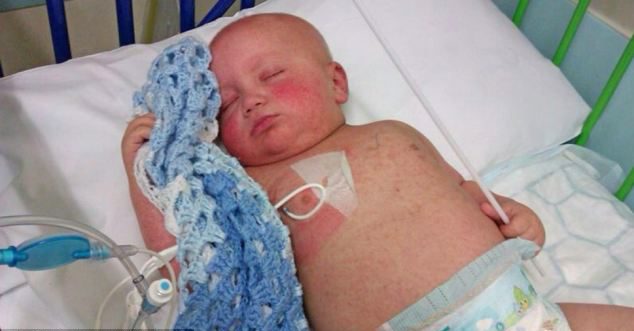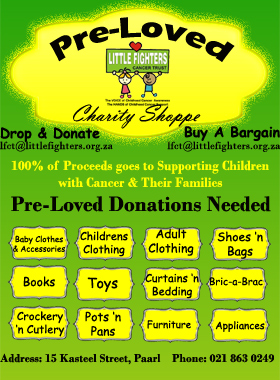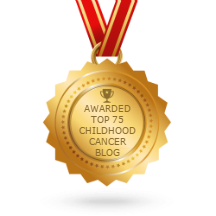Skin Conditions in Childhood Cancer

Symptom Management, Palliative Care, or Supportive Care to relieve side-effects is an important part of cancer care and treatment and should always form part of the overall treatment plan.
Most of us already know that certain cancer treatments can, in addition to slowing or stopping the growth of cancer, make a person’s hair fall out, but not everyone knows that cancer treatments can also affect a person’s skin, hair, and nails.
Skin problems from cancer treatment are often not severe may get better over time, while others may not go away. Some individuals struggle to cope with skin conditions cause by cancer treatment because they cause visible changes to the body.
Symptoms
Depending on the cause of the skin condition, it can present in various forms, such as rashes, redness, and other types of skin irritation such as blisters, peeling, or swelling in the area of treatment.
- Chemotherapy Leaks: Chemotherapy extravasation is the term used to describe what happens when chemotherapy given into a vein leaks onto the skin. Chemotherapy that touches the skin can cause pain or burning. If left untreated, this can also cause a wound to develop.
- Dry and Itchy Skin: Dry and itching skin is called pruritus. It may be more common for people with Leukaemia, Lymphoma, and Multiple Myeloma.
- Malignant Wounds: Malignant wounds form when cancer breaks the skin and causes a wound. Many types of cancer can cause malignant wounds. However, they are more common in people with skin cancer. Malignant wounds can easily become infected and be very painful. They may leak a large amount of fluid or blood. The odour from a malignant wound can also be very strong.
- Nail Changes: Cancer treatments can cause one’s nails to thicken or get thinner or develop light or dark streaks or grooves. The area surrounding the nails, such as the cuticle and skin, may also be affected
- Necrotic Wounds: Some cancers cause wounds to develop or make it difficult for wounds to heal. A necrotic wound is a wound that is surrounded by dead skin or, sometimes, dead muscle tissue.
- Pressure Ulcers or Bed Sores: Pressure ulcers are caused by constant pressure on one area of the body. They often form on the heels of the feet or the tailbone. Ulcers are less likely to form on parts of the body where there is a thicker layer of fat.
- Radiation-Related Skin Problems: When radiation treatment kills cancer cells, it also kills some healthy cells. This can cause the skin to peel, itch, or hurt. Damage to the skin from radiation treatment often starts after one or two weeks of treatment. In most cases, it gets better a few weeks after treatment ends.
- Rashes: Rashes can be a side effect of Chemotherapy, Targeted Therapy, or Radiation Therapy. Individuals may experience a rash that looks like acne or one that looks like measles
- Sensitivity to Light: Some types of chemotherapy can make the skin more sensitive to light, called photosensitivity.
Management/Treatment
Relieving side effects is an important part of total cancer care and treatment, which is why you should discuss any symptoms your child is experiencing, new symptoms and changes in symptoms with their Oncology Team so that they can work out a regimen of palliative or supportive care for them.
Most of the time, prevention is the best way to manage skin problems.
Here is some general information on common skin conditions in Children with Cancer and how they can be managed:
Chemotherapy Leaks
- If your child has pain or burning when receiving chemotherapy, tell someone on their healthcare team immediately.
- A member of the healthcare team will then most probably stop the chemotherapy and clean the area around the IV. They will also instruct you as to how to care for the problem at home.
Dry and Itchy Skin
- Using skin cream twice a day and within 15 minutes of showering can help for a dry skin. Showering and bathing with luke-warm water can also help as hot water can dry out the skin.
- Avoid products that irritate the skin such as soaps, detergents, and creams with fragrance, as well as products that scrub or scratch the skin such as sponges, bath scrubs, or loofahs.
- Avoid fragranced skin products; rather use creams with menthol, camphor as the cooling sensation can reduce the itching.
- Using antihistamines can also be an option, but be sure to consult with your child’s doctor before giving them any medication.
Malignant Wounds
- Placing an odour absorber in the room, such as cat litter, or charcoal can help lessen the smell.
- You can also burn candles that smell like, vanilla, vinegar, or coffee.
- Remember that some fragrances and perfumes can bother some people with cancer and may cause nausea.
- Topical antibiotics may be effective in reducing odour.
Nail Changes
- If your child’s nails change from chemotherapy, their doctor may recommend that they wear cold gloves or slippers while they are having chemotherapy, as the cold helps to narrow the blood vessels in the hands and feet, and this will reduce the amount of the chemotherapy drugs that reach the hands and feet.
- Trim your child’s nails do not let them get manicures and pedicures, and let them wear gloves for tasks such as yard work or cleaning.
- Use oils or creams to keep the skin around their nails soft, and do not let them wear shoes that are too tight.
Necrotic Wounds
- A necrotic wound cannot heal when it is surrounded by dead skin or tissue; the first step in treating a necrotic wound is removing dead skin or tissue with surgery or a special gel.
- If your child has a wound that is not healing, tell a member of their healthcare at once. The doctor may test the skin to find out if they have an infection, in which case they may need antibiotics.
Pressure Ulcers or Bed Sores
- An air- or water-pad that lies on top of the mattress helps prevent ulcers in patients who are bedridden.
- There are also special beds called “low-air-loss beds” or “air-fluidised beds” which may also help prevent ulcers or stop ulcers from worsening.
- Treatment for pressure ulcers can provide comfort, reduce pain, and keep them from getting worse.
Radiation-Related Skin Problems
- If skin damage from radiation treatment becomes a problem, your child’s oncologist may change the radiation dose or schedule until the condition improves.
- Using corticosteroid skin creams can prevent skin burns, but make sure that you do not put any on your child’s skin creams within four hours of the radiation treatment.
- Tell your doctor if you see any open sores or areas where the skin is moist. This may be a sign of an infection that needs treatment with antibiotics. Learn more about the Side Effects of Radiation Therapy.
Rashes
There are various ways of managing rashes, depending on the severity of the rash:
- Mild or moderate rashes can be treated with drugs called corticosteroids given as a cream that can be smeared on the rash. Antibiotic creams or ointments can also be used, or antibiotics may be given by mouth.
- More severe rashes that affect a child’s day-to-day life can be treated with corticosteroid skin creams as well as corticosteroid tablets.
- Chemotherapy may be stopped for a short time and restarted at a lower dose.
Sensitivity to Light
- The best way to prevent more sensitive skin from burning is to cover up with clothing, a hat, and/or use sunscreen before going out outside. Use a broad spectrum sunscreen that blocks UVA and UVB rays, with an SPF, or sun protection factor, of at least 15 for your child if they have sensitive skin.
Tips for Children with a Sensitive Skin
If your child has a sensitive skin or has a skin problem due to cancer treatment, try one of the following:
- Only use a mild soap or shampoo; avoid brands with dyes, perfumes, or alcohol, and well as acne soaps and washes, which can make problems worse by further drying out the skin.
- Have your child take baths or showers in lukewarm water instead of hot water.
- Moisturise your child’s skin right after bathing with a hypoallergenic moisturiser.
- Discourage your child from picking at pimples or scratching itchy spots, which could cause an infection.
- When outside your child should wear a hat and sunscreen with an SPF of at least 30, since skin is especially sun-sensitive during cancer treatment.
Wearing loose, soft cotton clothing may also help with your child’s discomfort, and special makeup or concealers can help cover up pimples, rashes, or other skin imperfections and improve the skin’s appearance.














